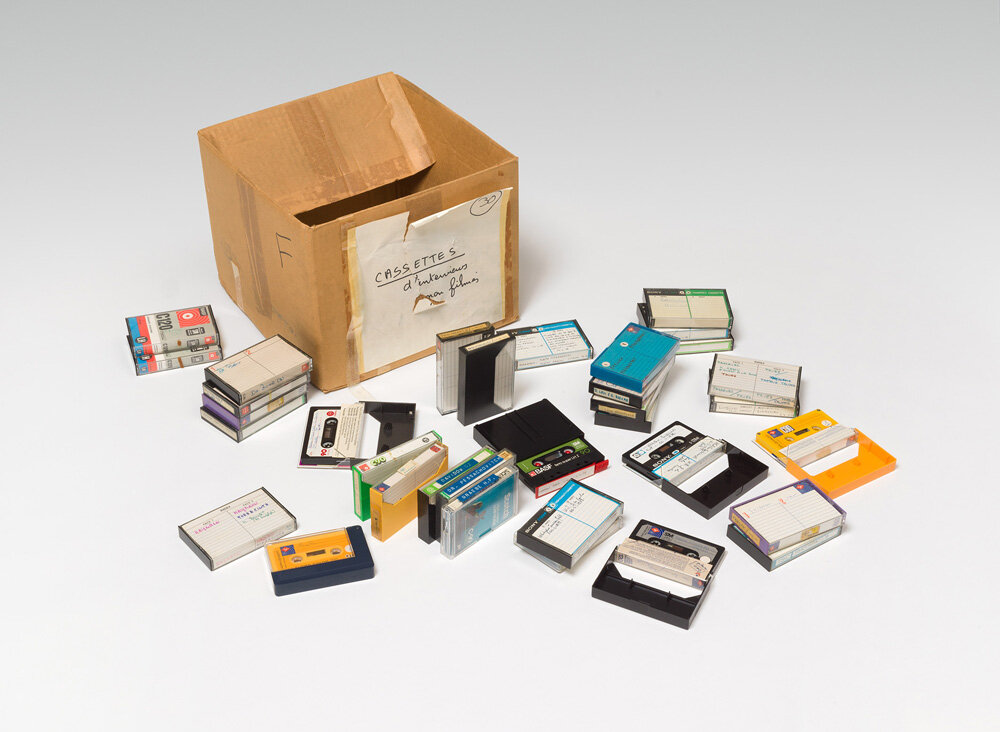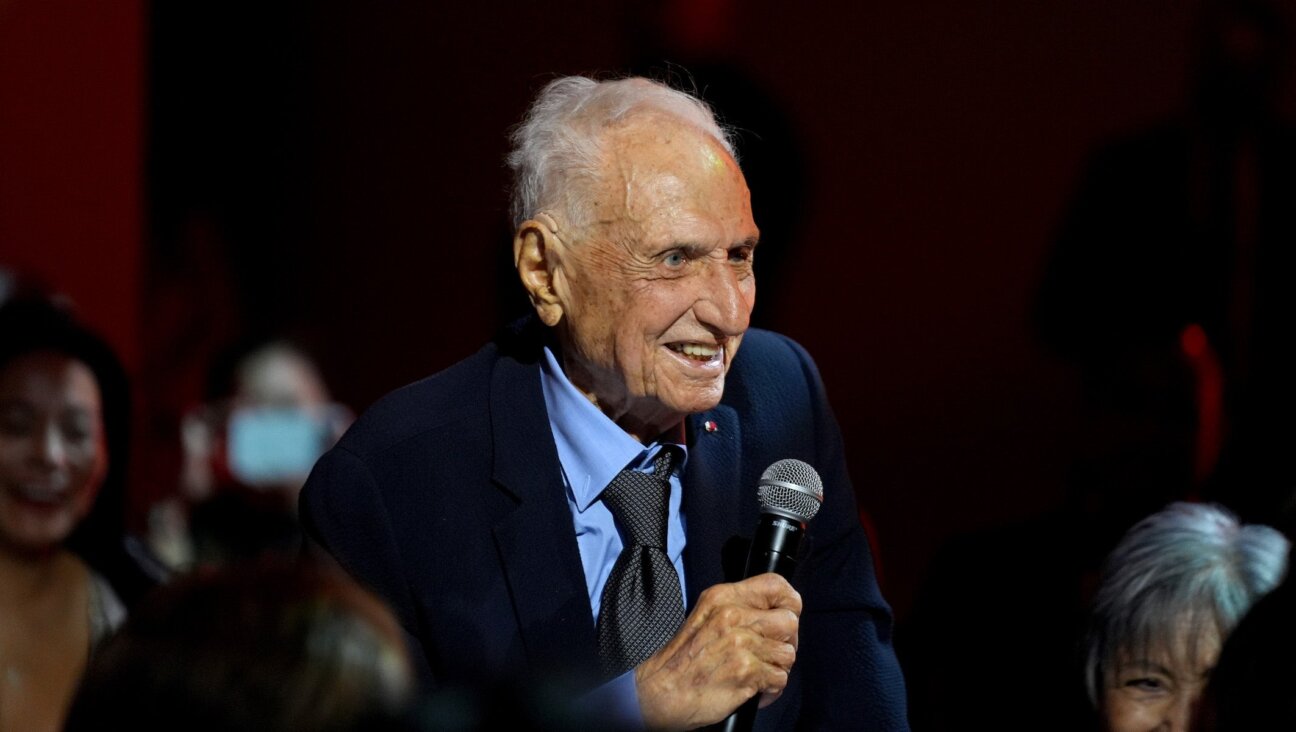The Man Who Couldn’t Escape Being Jewish
Raphael Soyer and the Search For Modern Jewish Art
By Samantha Baskind
North Carolina University Press, 280 pages, $39.95.
* * *|
For most of his long career, Raphael Soyer worked hard to avoid being called a “Jewish” artist. Soyer, who died in 1987 in his 88th year, styled himself a “New York painter,” a humanist, a foe of abstraction — almost anything but a Jew. And yet his most famous painting, an early portrait of his family, called “Dancing Lesson,” is often taken as a quintessentially Jewish painting. As a result, if Soyer is remembered at all, he is remembered as what he least wanted to be: a Jewish painter.
In “Raphael Soyer and the Search for Modern Jewish Art,” Samantha Baskind tries to account for Soyer’s paradoxes and, in the process, comes up with a workable definition of “Jewish art.” Soyer does not make this an easy task. “Dancing Lesson” (1926) is only “Jewish” because the painter’s mother is shown reading a copy of a Yiddish newspaper, and because a picture from the old country hangs on the wall. Until he began illustrating works by I.B. Singer in the 1970s, Soyer’s paintings tended to avoid explicitly Jewish rituals, subjects or themes. He liked street scenes. He also depicted his relatives, his friends and other artists he admired. Soyer, a talented draftsman and handler of paint, clearly wanted to belong to painting itself. He yearned to join the great masters of the American and European past.
In order to fit himself into the ultimately goyish tradition of Western painting, Soyer was forced to resort to feints and subterfuge. According to Baskind, Soyer found himself trapped between contradictory imperatives. Because he “desperately sought fame,” he felt he had to disguise his Judaism. At the same time, he wanted to do justice to his family and his background. Soyer therefore became involved in an intricate game of hide-and-seek.
By concentrating on the painter’s self-presentations on canvas and in print, Baskind gets to the heart of Soyer’s complex ambivalence. By her account, Soyer called himself a “New York painter” in order to draw attention away from his religious back-
ground and to redefine himself as both an American and a regionalist. She argues that, as a communist in the 1930s, Soyer identified with the homeless because he, too, lived in permanent exile in the galut. She maintains that in his later decades, Soyer registered his alienation — the double consciousness of Jews in the Diaspora — by portraying himself as a man who was permanently out of step or out of place, and she indicates that Soyer only confronted the true nature of his alienation when, toward the end of his life, he openly painted Jewish subjects in a “Jewish” style he derived from Jacob Epstein and Marc Chagall.
For Baskind, Soyer’s trajectory is actually typical: First the immigrant aspires to a different past and disavows his (or her) origins in favor of a new, American identity, but in the end, the immigrant must face up to the fact that the assimilation is never complete, that he or she always will be something of an outsider.
In thinking about Soyer’s story this way, Baskind can argue that Soyer’s work is Jewish in spite of the painter’s evasions. She can call his work “Jewish” precisely because he tries to translate the religious values of Judaism into secular, American terms. Like many of his generation, Soyer moved away from religion and recast his Jewishness as a purely ethnic identity. At the same time, he retained the ethical demands of the Law by affiliating himself with the Left and its calls for social justice.
Baskind argues that Soyer’s original sin was to decide that he was a “New York painter” and not a Jewish one. She blames Soyer’s “repudiation of his Judaism” for his alienation. Only by an act of return — to ostensibly Jewish themes in a demonstrably Jewish “style” — could Soyer be made whole. What is more, Baskind sees a bitter irony in Soyer’s fate. She suggests that his attempt to escape his Jewish identity led to critical confusion about his work, a confusion that prevented the painter “from receiving the attention he deserves.” It would seem, then, that Soyer staked everything on recognition, but his need to hide made recognition next to impossible.
While Baskind’s definition of Jewish art as work that “says something about Judaism through its content and/or the influence of its creator’s Jewish values” is very flexible, her emphasis is almost always religious. She is therefore somewhat dismissive of Soyer’s ethnic definition of Judaism, which she reads as a sign of his suspect desire to assimilate. When she discusses Soyer’s Popular Front sympathies, Baskind is quick to return to the Prophets as if there were no mediating figures between Amos and Marx. I wonder if Baskind might be missing an important nuance here. Soyer’s family was forced to leave Russia because of the father’s political activities. (The father, Avroham Soyer, was a Yiddish writer and a teacher of Hebrew who eventually found a post at Yeshiva University in New York.) Baskind does not really go into biographical detail, but she tells us enough about Raphael Soyer to make him look like a pretty typical Jewish socialist of his generation. Although she never uses the terms, she describes a Bundist who saw the historical fulfillment of Judaism in a secular yidishkayt and in the Messianic promise of revolution. Understood in this light, Soyer did not really repudiate Judaism early in his career. He just used different means to pursue it.
Baskind’s thoughtful and provocative book might therefore benefit from a more precise account of Soyer’s social and intellectual milieu. To place him in a Yiddish-speaking New York in the first decades of the 20th century also might help explain the oblivion into which Soyer has receded. Raphael Soyer had the bad luck to make his name in the decade before the New York art world embraced the avant garde. By the end of the 1940s, abstraction and other forms of radical innovation had become the order of the day. Soyer was a fierce critic of Abstract Expressionism and its progeny. He found himself — and not for the first time — on the losing side of history.















